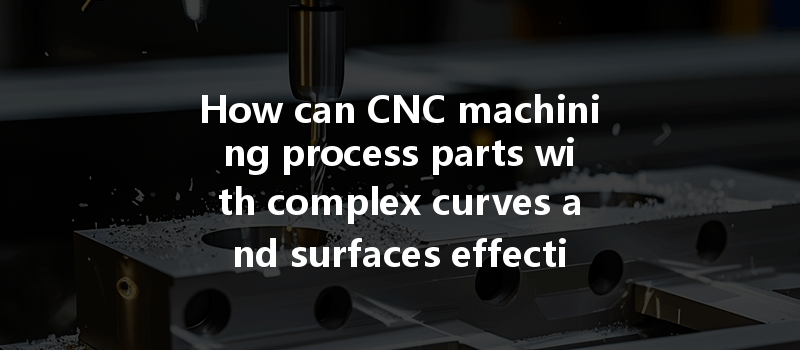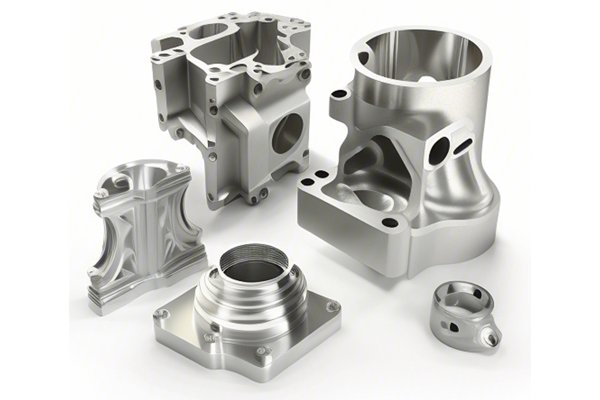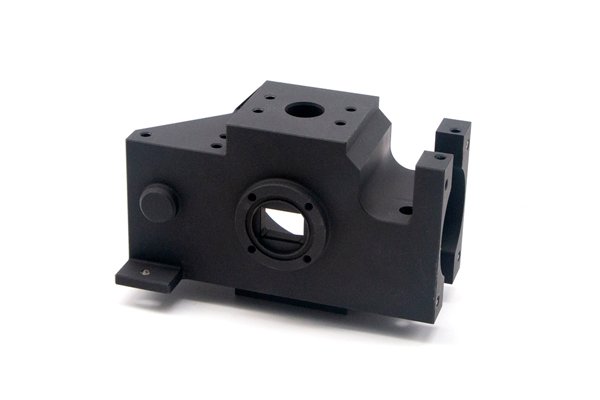:
In the contemporary manufacturing landscape, CNC (Computer Numerical Control) machining has emerged as a pivotal technology, revolutionizing the way intricate designs are transformed into tangible components. At YL Machining, we understand that the capability to produce parts with complex curves and surfaces efficiently is vital for numerous industries, including aerospace, automotive, medical devices, and consumer electronics.
The demand for precision-engineered components with sophisticated geometries is escalating as manufacturers strive to innovate and reduce weight without compromising strength. In this blog, we will explore the methods and considerations involved in effectively utilizing CNC machining for tasks that involve intricate curves and surfaces.
From tooling and programming strategies to material selection and quality control, this detailed discussion will guide you through the nuances of leveraging CNC technology for complex machining tasks. Join us as we delve into the technical components, best practices, and emerging trends that are shaping this high-precision area of manufacturing.
Understanding CNC Machining
CNC machining is an automated process that involves the use of computer-controlled tools to cut, mill, grind, and finish materials into desired shapes and sizes. Unlike traditional manual machining, CNC machining offers higher accuracy, speed, and repeatability, making it ideal for producing parts with complex geometries. CNC machines are programmed using G-code, which allows operators to stipulate exact movements and operations for the cutting tools with high precision.
The Importance of Complexity in Design
Complex curves and surfaces are increasingly important due to their contributions to improved performance and functionality. In the automotive sector, for example, components such as intake manifolds showcase intricate designs that maximize airflow while minimizing weight. In the medical field, high-precision parts like surgical instruments require complex geometries tailored for specific functions.
Benefits of Using CNC for Complex Shapes
Utilizing CNC machining for complex shapes delivers several benefits:
Techniques for Machining Complex Surfaces
To effectively machine parts with complex curves and surfaces, several techniques can be employed, including:
What is it?
5-axis machining involves the use of cutting tools that can move in five different axes simultaneously. This advanced capability allows for the creation of geometrically complex parts that would otherwise require multiple setups, leading to a more efficient machining process.
Benefits:
The choice of tooling is crucial when machining complex curves and surfaces. Cutting tools with specific geometries—such as ball end mills and tapered end mills—are designed to navigate tight corners and intricate details.
Key Considerations:
Adaptive toolpath strategies auto-adjust the toolpath based on the complexity of the part. This technology optimizes cutting speeds and feeds in real time while ensuring that material is removed efficiently.
Advantages:
Computer-Aided Manufacturing (CAM) software is integral to successfully programming CNC machines for complex parts. This software translates CAD designs into machine-readable code, facilitating intricate toolpath design.
Features to Look for in CAM Software:

Material Selection for Complex Machining
Selecting the right material plays a critical role in the success of machining operations involving complex geometries. Different materials exhibit varying degrees of machinability, strength, and thermal properties. Factors to consider in choosing the right material include:
Materials like aluminum, titanium, and various plastics are popular for complex configurations due to their favorable machining properties.
Understanding the machinability of specific materials is crucial. Higher machinability ratings usually lead to reduced tool wear, increased cutting speeds, and overall lower manufacturing costs.
Quality Control Measures
When dealing with complex machining operations, quality control is paramount. Here are some essential steps to ensure product integrity:
Utilizing sensors and vision systems during machining can allow for real-time monitoring of part specifications. Adjustments can be made on the fly, reducing the risk of defects.
After machining, various methods such as coordinate measuring machines (CMM) and laser scanning can be employed to verify that parts meet the required specifications and tolerances.
Implementing SPC techniques helps in monitoring and controlling the machining process by analyzing data to identify trends and variations.
Challenges in Machining Complexity
Despite the advanced techniques available, machining complex shapes presents several challenges that need to be addressed proactively:
Machining intricate geometries places significant strain on tooling, which may lead to premature wear or breakage. Regular monitoring and scheduled tool replacements can minimize downtime and maintain part quality.
Complex machining can generate significant heat, which may impact material properties and tool life. Implementing effective cooling strategies, such as using coolant fluids or optimizing cutting speeds, can help mitigate these effects.
Ensuring CNC machines are calibrated correctly and undergo regular maintenance is essential for achieving consistent output. Downtime due to machinery issues can severely affect production timelines.
The Future of CNC Machining for Complex Parts
As technology continues to evolve, several emerging trends are likely to influence the future of CNC machining for complex shapes:
Artificial Intelligence and Machine Learning:
AI algorithms can predict machining outcomes and suggest optimal parameters, enhancing efficiency and precision in real-time.
Additive Manufacturing Integration:
Combining CNC machining with additive manufacturing techniques (like 3D printing) allows for the production of hybrid parts that can have both complex internal structures and tough exterior surfaces.
Eco-Friendly Practices:
The move toward sustainability is driving innovations in materials and processes. More manufacturers are exploring biodegradable materials and waste-reduction strategies in CNC machining.
In conclusion, effective CNC machining of parts with complex curves and surfaces is both an art and a science. By leveraging advanced technologies, adopting best practices, and choosing the right materials and tools, manufacturers can produce high-quality parts that meet stringent specifications.
At YL Machining, we combine state-of-the-art CNC technology with expert knowledge to provide comprehensive machining solutions tailored to your complex manufacturing needs. Whether it’s aerospace components or intricate medical devices, we aim to turn your ambitious designs into reality with precision and efficiency. As the industry advances, staying attuned to technological innovations will ensure that we continue to meet the challenges of tomorrow’s designs.
Stay in touch for more insights on how we can enhance your manufacturing processes with our CNC machining capabilities!



